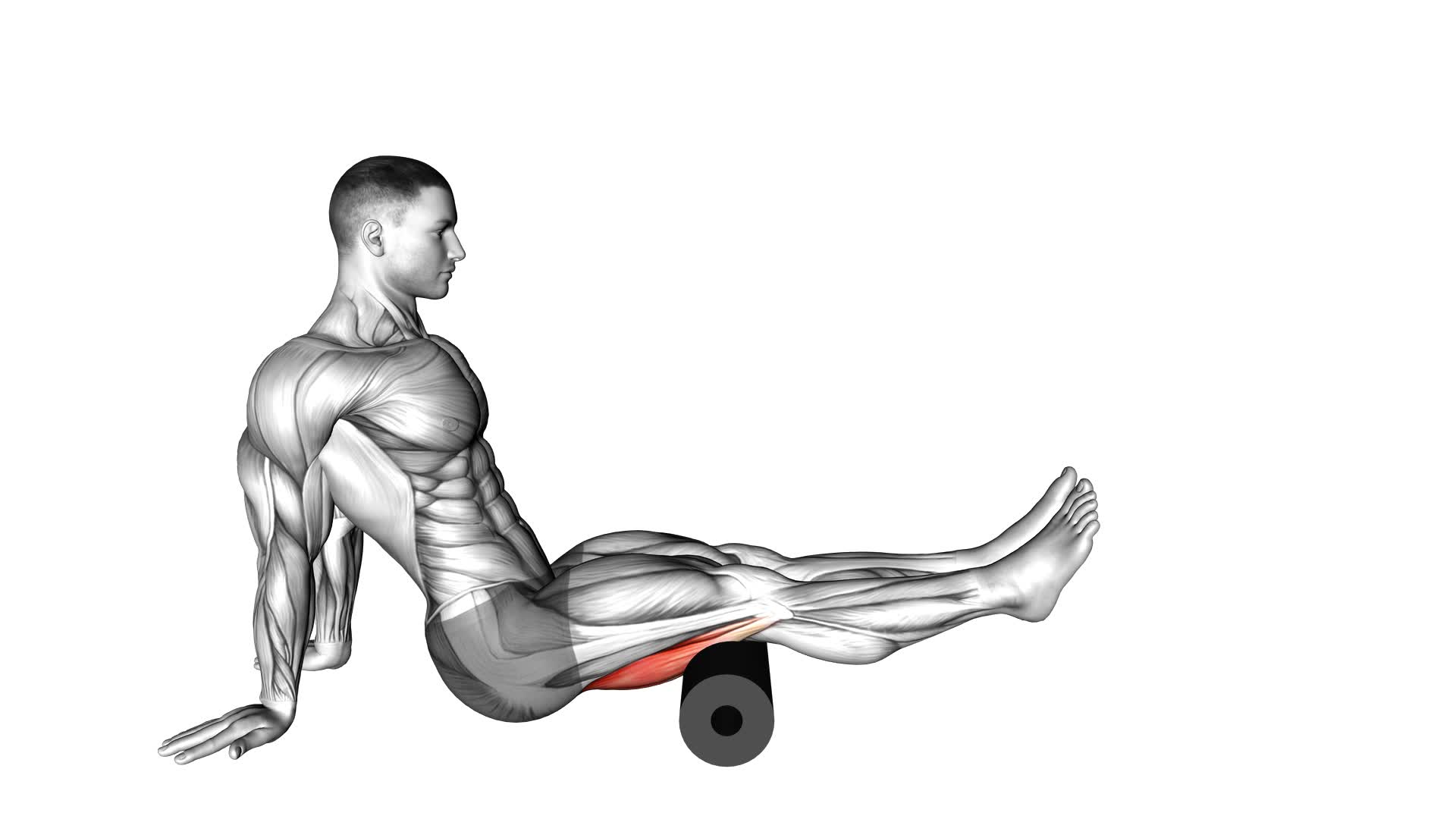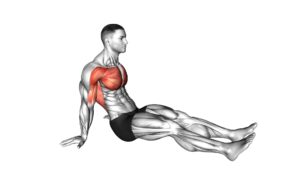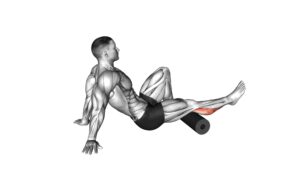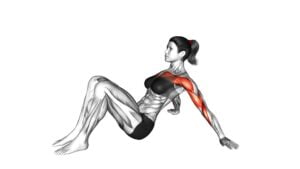Roll Seated Shoulder Flexor Depressor Retractor – Video Exercise Guide & Tips

In this video exercise guide, you'll learn how to perform the Roll Seated Shoulder Flexor Depresor Retractor exercise. By following proper form and technique, you can reap the benefits of this exercise, such as strengthening your shoulder muscles and improving flexibility.
Watch This Exercise Video
We'll also provide variations and modifications for different fitness levels, as well as common mistakes to avoid.
Get ready to maximize your workout with these helpful tips!
Key Takeaways
- The roll seated shoulder exercise targets and enhances shoulder flexibility while strengthening deltoids, rotator cuff, and scapular stabilizers.
- Proper form and technique are crucial for this exercise, including controlling the motion, maintaining proper posture, and using appropriate resistance.
- Variations and modifications can be made to increase the intensity of the exercise, such as using stability balls or adding resistance with dumbbells or bands.
- It is important to avoid common mistakes like slouching or using excessive force, and to gradually increase intensity over time while listening to your body.
Benefits of the Roll Seated Shoulder Exercise
Improve your shoulder strength and flexibility with the Roll Seated Shoulder Exercise's benefits.
This exercise is a great way to target and enhance the flexibility of your shoulders, while also strengthening the surrounding muscles. By incorporating this exercise into your routine, you can experience improved range of motion and reduced risk of shoulder injuries.
The Roll Seated Shoulder Exercise specifically targets the muscles responsible for shoulder flexibility, such as the deltoids, rotator cuff, and scapular stabilizers. These muscles play a crucial role in allowing your shoulders to move freely and without discomfort. By regularly engaging in this exercise, you can increase the flexibility of these muscles, leading to improved shoulder mobility.
In addition to promoting shoulder flexibility, the Roll Seated Shoulder Exercise also serves as a strengthening exercise. As you perform the exercise, you actively engage and strengthen the muscles around your shoulders. This can help to build overall shoulder strength, making daily activities and other exercises easier to perform.
Incorporating the Roll Seated Shoulder Exercise into your routine can provide numerous benefits, including increased shoulder flexibility and improved strength. By targeting the muscles responsible for shoulder mobility, this exercise can help enhance your range of motion and reduce the risk of injuries.
Proper Form and Technique for the Roll Seated Shoulder Exercise
To properly perform the Roll Seated Shoulder Exercise, follow these guidelines to ensure correct form and technique. Proper technique is crucial for maximizing the benefits of this exercise and minimizing the risk of injury.
One common mistake is using excessive momentum to perform the movement. It's important to control the motion throughout the exercise, rather than relying on momentum to carry you through. This can be achieved by engaging the shoulder muscles and focusing on a slow and controlled movement.
Another mistake is allowing the shoulders to hunch up towards the ears. To maintain proper form, keep your shoulders down and back throughout the exercise. This will help activate the targeted muscles and prevent unnecessary strain on the neck and upper back.
Additionally, be mindful of your posture during the exercise. Sit tall with your spine straight and core engaged. This will provide a stable base and allow for optimal muscle activation.
Lastly, ensure that you're using an appropriate amount of resistance for your fitness level. Too much resistance can lead to poor form, while too little resistance may not provide enough challenge. Adjust the resistance as needed to maintain proper form and challenge your muscles effectively.
Variations and Modifications for the Roll Seated Shoulder Exercise
For variations and modifications of the Roll Seated Shoulder Exercise, you can make adjustments to the resistance, range of motion, or incorporate additional equipment. Here are some options to consider:
- Chair modifications:
- Use a stability ball instead of a chair to engage your core muscles and improve balance.
- Place a cushion or folded towel on the chair to provide additional support and comfort.
- Advanced variations:
- Increase the resistance by using dumbbells or resistance bands.
- Perform the exercise on a stability disc or wobble board to challenge your balance and stability.
- Incorporate rotation by twisting your torso as you roll the shoulder forward and backward.
- Combine the Roll Seated Shoulder Exercise with other upper body exercises, such as bicep curls or lateral raises, to create a more comprehensive workout.
Remember to listen to your body and choose variations and modifications that are suitable for your fitness level and goals. It's important to maintain proper form and technique throughout the exercise to avoid injury and maximize the benefits. Consult with a fitness professional if you have any concerns or questions about modifying the Roll Seated Shoulder Exercise.
Common Mistakes to Avoid During the Roll Seated Shoulder Exercise
One common mistake to avoid during the Roll Seated Shoulder Exercise isn't maintaining proper posture throughout the movement. Proper posture is crucial to avoid injury and maximize the effectiveness of the exercise. To maintain proper posture, start by sitting on a stable surface with your feet flat on the floor and your back straight. Keep your shoulders relaxed and avoid slouching or rounding your upper back. Maintaining a neutral spine position will help to engage the correct muscles and prevent strain on the neck and shoulders.
Another mistake to avoid isn't utilizing the proper breathing technique. It's important to breathe deeply and rhythmically during the exercise. Inhale deeply through your nose as you prepare for the movement, and exhale slowly through your mouth as you roll your shoulders forward and backward. This controlled breathing technique helps to oxygenate your muscles and promote relaxation, reducing the risk of injury.
By avoiding these common mistakes and maintaining proper posture and breathing technique, you can ensure a safe and effective Roll Seated Shoulder Exercise.
Now, let's move on to some tips for getting the most out of this exercise.
Tips for Getting the Most Out of the Roll Seated Shoulder Exercise
To get the most out of the Roll Seated Shoulder Exercise, focus on maintaining proper form and gradually increasing the intensity of the movement. This exercise is beneficial for improving shoulder mobility and preventing shoulder injuries. Here are some tips to help you maximize the effectiveness of this exercise:
- Start with proper posture: Sit tall with your back straight and shoulders relaxed. This will ensure that you engage the correct muscles during the exercise.
- Use controlled movements: Avoid jerking or swinging your arms during the exercise. Slow and controlled movements will target the muscles effectively and reduce the risk of injury.
- Focus on the shoulder blades: Throughout the exercise, concentrate on retracting and depressing your shoulder blades. This will activate the muscles responsible for improving shoulder mobility and stability.
- Gradually increase the intensity: Begin with a lighter resistance band and gradually progress to a heavier one as your strength and shoulder mobility improve. This will challenge your muscles and promote further development.
Frequently Asked Questions
How Many Sets and Repetitions Should I Do for the Roll Seated Shoulder Exercise?
To determine the number of sets and repetitions for the roll seated shoulder exercise, you need to consider your fitness goals and current fitness level. Generally, it's recommended to perform 2-3 sets of 8-12 repetitions.
However, you can adjust the sets and reps based on your individual needs and preferences. Remember to start with lighter weights and gradually increase the intensity as you progress.
Variations of the roll seated shoulder exercise can also be incorporated to target different muscle groups.
Can the Roll Seated Shoulder Exercise Help With Improving Posture?
Improving your posture is one of the benefits you can gain from the roll seated shoulder exercise. By engaging the shoulder flexor, depressor, and retractor muscles, this exercise helps strengthen and stabilize your shoulder girdle.
As a result, it promotes proper alignment of your upper body, which contributes to better posture. Incorporating the roll seated shoulder exercise into your routine can be an effective way to improve your overall posture and enhance your physical well-being.
Is the Roll Seated Shoulder Exercise Suitable for Individuals With Shoulder Injuries?
The roll seated shoulder exercise can be modified to suit individuals with shoulder injuries. By making adjustments to the range of motion and resistance, it can be a beneficial addition to a rehabilitation program.
Incorporating this exercise can help strengthen the shoulder muscles and improve stability, which is crucial for those recovering from injuries.
It's important, however, to consult with a healthcare professional or physical therapist to ensure proper modifications are made to avoid further injury.
Can the Roll Seated Shoulder Exercise Be Done Using a Resistance Band Instead of a Foam Roller?
Yes, you can modify the roll seated shoulder exercise by using a resistance band instead of a foam roller.
This modification offers several benefits. Firstly, it provides added resistance, which helps to strengthen the shoulder muscles.
Additionally, using a resistance band allows for a greater range of motion, enhancing the effectiveness of the exercise.
Are There Any Specific Breathing Techniques to Follow During the Roll Seated Shoulder Exercise?
When performing the roll seated shoulder exercise, it's important to pay attention to your breathing techniques and maintain proper form.
Breathing properly can help you engage your core and stabilize your body during the exercise. Focus on inhaling deeply through your nose and exhaling fully through your mouth.
This will help you stay focused and maintain control throughout the movement. Remember, proper breathing techniques are essential for maximizing the benefits of this exercise.
Conclusion
In conclusion, the Roll Seated Shoulder Exercise is a highly beneficial exercise that targets the shoulder muscles. By following proper form and technique, individuals can effectively strengthen and mobilize their shoulders.
Additionally, there are variations and modifications available to accommodate different fitness levels and goals. It's important to avoid common mistakes during the exercise to prevent injury and maximize results.
By incorporating these tips, individuals can make the most out of their Roll Seated Shoulder Exercise routine.

Author
Years ago, the spark of my life’s passion ignited in my mind the moment I stepped into the local gym for the first time. The inaugural bead of perspiration, the initial endeavor, the very first surge of endorphins, and a sense of pride that washed over me post-workout marked the beginning of my deep-seated interest in strength sports, fitness, and sports nutrition. This very curiosity blossomed rapidly into a profound fascination, propelling me to earn a Master’s degree in Physical Education from the Academy of Physical Education in Krakow, followed by a Sports Manager diploma from the Jagiellonian University. My journey of growth led me to gain more specialized qualifications, such as being a certified personal trainer with a focus on sports dietetics, a lifeguard, and an instructor for wellness and corrective gymnastics. Theoretical knowledge paired seamlessly with practical experience, reinforcing my belief that the transformation of individuals under my guidance was also a reflection of my personal growth. This belief holds true even today. Each day, I strive to push the boundaries and explore new realms. These realms gently elevate me to greater heights. The unique combination of passion for my field and the continuous quest for growth fuels my drive to break new ground.



